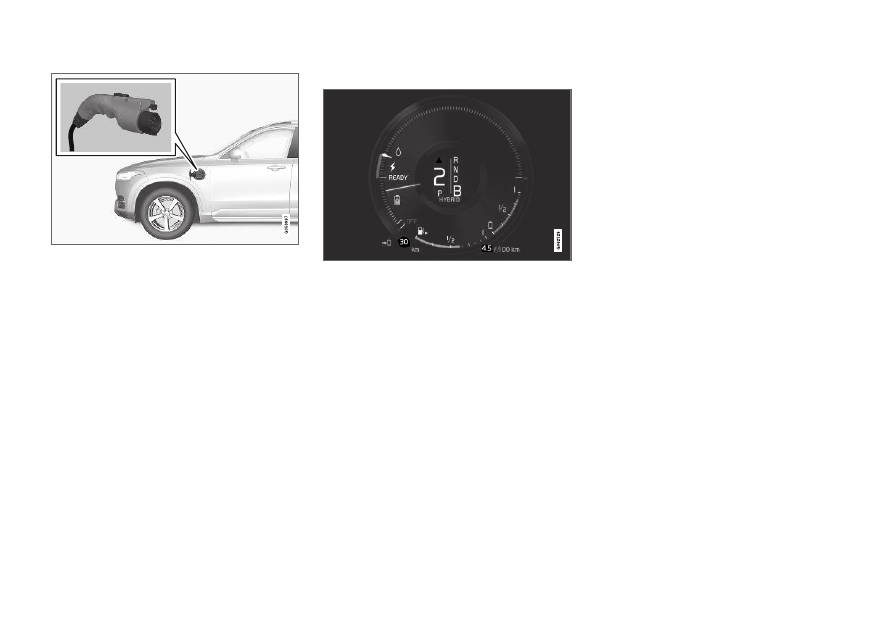Volvo XC90 Twin Engine (2019 year). Manual - part 25

||
HYBRID INFORMATION
418
Charging cable handle and charging socket.
Charging status is indicated in three ways:
•
The indicator lights in the charging module
(the unit connected to the wall outlet).
•
Indicator light in the vehicle's charging
socket.
•
Images and text in the instrument panel.
The start battery is charged while the hybrid bat-
tery is charging and stops charging when the
hybrid battery is fully charged.
If the hybrid battery's temperature is below
-10
ºC (14 ºF) or above 40 ºC (104 ºF), some of
the vehicle's functions may be reduced or not
available at all.
The electric motor cannot be used if the battery's
temperature is too low or too high. If the PURE
drive mode is selected, the gasoline engine will
start.
Charging using the gasoline engine
The vehicle generates electrical current to charge the
battery, e.g. when the driver lightly presses the brake
pedal or when engine braking is used on downgrades.
The vehicle can also generate current to the
hybrid battery to charge it.
•
The hybrid battery can also be recharged by
lightly depressing the brake pedal, i.e. during
light braking. This converts the vehicle's
kinetic energy to electrical energy, which is
used to charge the hybrid battery.
•
In gear position B, the electric motor brakes
the vehicle when the accelerator pedal is
released and the hybrid battery is recharged
at the same time.
•
The combustion engine can also help
recharge the hybrid battery.
Related information
•
•
•
Opening and closing the charging socket
cover (p. 422)
•
Initiating hybrid battery charging (p. 423)
•
Stopping hybrid battery charging (p. 429)
•
Charging status in the charging cable's
charging module (p. 425)
•
Charging status in the vehicle's charging
socket (p. 425)
•
Charging status in the instrument panel
(p. 427)
•
Twin Engine symbols and messages in the
instrument panel (p. 430)
•
Gear selector positions for automatic trans-
missions (p. 449)
•
•